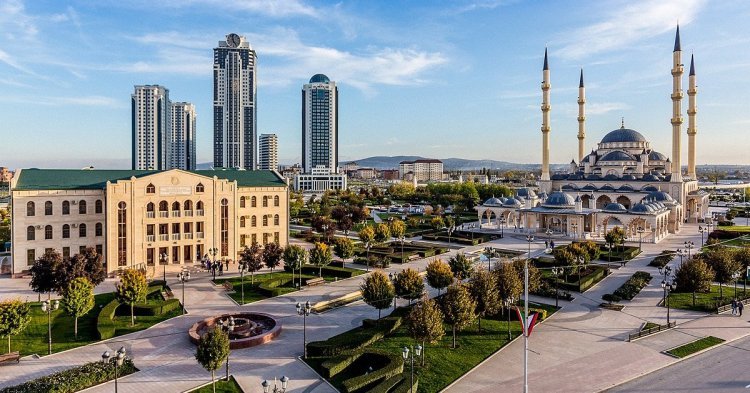A general trend has been taking place in Russian Autonomous region Chechnya and Dagestan with the surge of radicalism. This resurfaced when Anti Jewish raid conducted by radical muslims on 29th October 2023 when flight from tel aviv landed on the Dagestan Makhachkala airport Airport. This act of Islamic Intolerance not isolated in any manner where an alarming trend in Europe noticed where the young Muslims resorted to violence adhering to Islamist ideology, resisting diversity and liberal values as it clashes with their fundamental beliefs accompanied by idea of domination and intolerance that translated in several radical break outs including The murder of Samuel Paty in 2020,, and recent events of where one young Chechen boy stabbed and subsequently assassinated Dominique Bernard, a history teacher in France, due to boy’s discomfort with Historical narratives tabled by The teacher. As per the data, 80 percent of the French teachers have faced disruption during the discourse of teaching the circular to these students highlighting a trend among the Muslim youth that resist accommodating diverse views, often resorting to violence out of the preexisting indoctrinated beliefs.
The Russian Republic of Chechnya has been a hub of islamist radicalism even as France and other European countries work to address this issue.During the Chechen wars of the 90’s and early 2000’s, thousands of ethnic Russians were killed by Chechen terrorists, including Russian children during the Beslan terror attack of 2004. Since then, the Russian authorities have taken harsh measures to contain the Islamic terrorism to defend the Chechan land.Chechnya region, with its autonomous Republic status under the leadership of Ramzan Kadyrov with the tradeoff of “No more terrorist attacks.” In exchange of lucratic monetary incentives to Kadyrov from Kremlin. Chechnya expenditure reliance over the Kremlin surmount to 80 percent, which provides the Kremlin with higher bargaining power.
The Kremlin’s Power structure in Post Putin reality cast skepticism over these security incentive arrangements, as the growing trend of Jihadist Radicalism through the internet among the muslim became popular especially in the western hemisphere with the surreal exhibition of Antisemitism on the streets. Although such instances have not broken out in Russia where after the Dagestan raid Kadyrov issued a condemning statement. Analyzing the events and Kadyrov statement on Imam Shamil a national hero of Dagestan that led the resistance to the Tsarist empire invasion to the caucasus clearly signals Kadyrov desperation to curb the radicalism that could jeopardize the Kadyrov-Kremlin alliance out of his inefficient ruling.
In light of Afghanistan’s realities, the mullah’s march to power may set up a precedent that could herald a future conflict between Russians and Chechens to revive the caucasus Emirates. A recent law-and-order case involving Kadyrov’s son beating on an ethnic Russian soldier reveals the inefficiency of Russian Legal code that out of Political compromise falls short to challenge the legal reality of caucasus, posing the challenge to russian physical monopoly of violence. This inefficiency in the long term could contribute in the dissolution of Russian federation.
Beyond the Laws: Woman And Terror
Ramzan Kadyrov’s infamous virtue campaign availed less attention in the discourse of Radicalism in Russia, but it severely violates the liberal tradition of the west even incompatible with modern Russian society. The virtue campaign accommodates an abrogation of the rights of women to decide their preferences through the instrument of violence, grooming, and legal terror seen in numerous cases. Despite a long tradition of this virtues campaign not much attention has been placed on it by the kremlin. The concept of anti-Shia rhetoric and Honor killings has been the cornerstone of Chechen Jungle Legal System.
Kadyrov in one of his statements justified the honor killing stating when seven women’s bodies were found in 2009 after been shot in the head, responding to it Kadyrov these women had “loose morals.” “If a woman runs around and if a man runs around with her, both of them are killed.” Therefore, they are rightly shot by their male relatives.
Going further, the campaign is describing women as the property of their husbands and says their main role is to bear children. This reveals a general mindset of certain traditional Chechen men, who are culturally permitted to conduct honor killing and polygamy with their participation in the grooming of non compliant girls to their laws either by physical violence or dogmatic manipulation, allowing men to exercise complete authority that has led to creation an objectified view of woman allowing forced marriages to cage the women’s.
Opposition to Kadyrov
The Chechen leader appears to face challenges in maintaining relevance in the region, as reports suggest that Kadyrov’s mobilization campaign has encountered significant setbacks. Chechen allegiance is often rooted in familial and clan loyalties, which have traditionally empowered patriarchal figures. This power structure allows the Chechen community to wield influence over political decisions, fostering resilience during times of conflict. While there is a notable presence of anti-Russian sentiment among Chechen soldiers, economic dependencies on Kremlin financial support have, to some extent, tempered the open expression of such sentiments. Abdul Hakim al-Shishani, an ex Chechen commander associated with Ukraine through his organization Ajnad al-Kavkaz, is known for promoting Sunni fundamentalism with elements of Salafism, which resonates with the Caucasus Emirate.
The army of Kadyrovites, comprised mainly of Chechens, has played a role in supporting the Russian military efforts in the Ukraine region. This raises concerns, particularly as the overall Russian army faces casualties and challenges in countering the Western-backed Ukrainian forces. The centralization of control over violence by this private army questions the governance of other regions, especially in light of potential new separatist movements within the Russian Federation.
Russia’s ethnic diversity, with 190 ethnicities, leaves room for the possibility of autonomous regions. Unchecked radicalization within these regions, particularly in the context of limited state intervention, could lead to internal clashes, especially among Ultra-Orthodox Christians and Radical Muslims in places like Chechnya.
Western perspectives on Russian realities may be limited, hindering the potential for peaceful cooperation. This skepticism dates back to the 2004 Beslan Terrorism incident, where European doubts about Vladimir Putin’s approach to counterterrorism emerged. In contrast, following the Twin Towers attack, Putin expressed condolences and commitment to fighting terrorism, aligning with the United States in the “War on Terror.” The diverse nature of Russian society, often perceived as a unified entity, is, in reality, a forced amalgamation of various nationalities with separatist aspirations. This union is maintained through concessions and force, balancing autonomy and liberties in exchange for allegiance to the Kremlin.


Follow the comments: |
|
